
Josef ŘECHKA
–
One of the Few
jeden z hrstky
…………….* 12.09.1910. Jesenice.
…………….† 15.01.84. Redhill, UK.
The Early Years: Raná léta:
Josef Řechka was born 12 September 1910, the son of a publican in Jesenice, a small town near Prague. As a child he helped behind the bar until, as a teenager he was sent to Prague to learn the hotel trade. Instead he spent virtually all of his time at the airport. He knew every square metre of it. He watched the preparation, the take-offs, the landings. He never wanted to be anything else but a pilot – a seemingly impossible dream for a village boy, but he was determined – in a magazine he found details how to join a Czechoslovak Air Force school. When he returned home he spent the next six months persuading his mother to sign her parental consent on the application form which would enable him to join the Air Force. He had told her that the application form was for an engineering course.
Josef Řechka se narodil 12.9.1910, jako syn hostinského v malém městečku Jesenici, nedaleko Prahy. V dětském věku již pomáhal za barem, a jako dospívající byl poslán na studie do hotelová školy v Praze. Veškerý svůj volný čas trávil na letišti, na němž znal každý čtvereční metr. Sledoval přípravu letounů k letu, jejich vzlet a přistání. Chtěl se stát také pilotem – což byl zdánlivě pro něho neuskutečnitelný sen, ale on, byl odhodlán jej uskutečnit – v časopise našel informace o způsobu přijetí do letecké školy československého letectva. Po návratu domů, šest měsíců přesvědčoval svoji matku, než mu podepsala souhlas rodičů na přihlášce k letectvu. Aby ji podepsala, tak ji řekl,, že se jedná o přihlášku do strojírenského kurzu.

Josef Řechka, Prostějov 1928.
Czechoslovak Air Force:
Československé letectvo:
On 1 October 1928, a few days before reaching the age of eighteen, he left for the eight hour train journey to the Military Aviation Academy at Prostějov where he commenced his military flying training. He was a natural pilot and was flying solo after just 24 hours of airborne training. He remained here until 1 October 1930, when he was posted, as a fighter pilot, to 32nd Fighter unit of the 1 Air Regiment based at Cheb. This posting was until the end of December 1933 when he was posted to the Air Force Test Flying unit based at Letňany airbase near Prague, where he remained until the end of April 1937. Now 26, he resigned from the Air Force and, on 1 May 1937 joined Československé letecké společnosti [ČLS] as an airline pilot. They were a civilian airline, part of the Škoda industrial group and were based at Ruzyně airport, Prague. He worked here until 6 August 1939.
Dne 1. října 1928, několik dní před dosažením věku osmnácti let se vydal na osmihodinovou cestu vlakem do vojenské pilotní školy v Prostějově, kde zahájil pilotní výcvik. Byl přirozeným pilotem. První sólo – samostatný let, provedl po 24 letových hodinách s instruktorem na letounu s dvojím řízením. V letecké škole byl až do 1.10.1930, kdy byl vyslán jako stíhací pilot 32. stíhací jednotky, 1. stíhacího leteckého pluku se sídlem v Chebu. Zde sloužil až do konce prosince 1933, kdy byl zařazen do jednotky pro zálety letounů, založené na letecké základně Letňany u Prahy, kde působil do 26. dubna rok 1937, kdy jako pilot dopravních letounů, začal létat u Československé letecké společnosti (CSLA). Což byla civilní letecká společnost, založená na letišti Ruzyně v Praze, jako součást průmyslové skupiny Škoda. Zde působil do 6 . 8. 1939.
German Occupation:
Německá okupace:

Czechoslovakia, Autumn 1938. / Československo, podzim 1938.
When Germany occupied Czechoslovakia, in March 1939, all Czech military and civilian planes were grounded. Czechoslovakia was now part of the Reich Protectorate, the pilots, about 1500, were invited to join the German Luftwaffe. Řechka was one of the many Czech pilots who decided to leave before this invitation became an order.
Po okupaci zbytkového území Československa v roce březnu 1939, všechny české vojenské i civilní letouny měli od říšského protektora zákaz létání a asi 1500 pilotům bylo nabídnuto, aby se připojily k německé Luftwaffe. Řechka byl jedním z pilotů, kteří se rozhodli odejít z Protektorátu do zahraničí dříve, než by se toto pozvání stalo rozkazem.
To Poland:
Do Polska:
He left for Poland on 7 August 1939. With the assistance of an underground organisation Řechka and some other airmen were smuggled over the border into Poland. Initially he was at Bronowice Małe, near Krakov, a former Austro-Hungarian army camp, now being used as temporary accommodation for escaping Czechoslovaks wanting to join military units in Poland.
Za pomoci podzemní organizace 7. srpna 1939, Rechka s některými dalšími letci překročili hranice do Polska. Z počátku byli v bývalém rakouskouherském táboře Malé Bronowicie u Krakova a v roce 1939 používaném pro dočasné ubytování Čechoslováků, kteří chtěli vstoupit do vojenských jednotek v Polsku.

Czechoslovak escapers at Bronowice Małe, Summer 1939. / Českoslovenští uprchlíci v létě 1939 v Malé Bronowici.
To France:
Do Francie:
On 17 August he boarded the ‘Kastelholm’ at Gdynia and four days later arrived at Calais, France. The same day he travelled to Balard, an army camp near Paris from where some of his colleagues were transferred to Algeria for service in the French Foreign Legion. However before Řechka could also be transferred there, war was declared and he was rapidly conscripted into I’Armee d’Air.</p
Dne 17 srpna v Gdyni spolu s dalšími československými letci nastoupili na loď Kastelholm, která za čtyři dny připlula do Calais ve Francii. Ve stejný den byli převezeni do Balad nedaleko Paříže, kde byla náborová základna francouzské cizinecké legie. Někteří jeho kolegové byly v rámci francouzské cizinecké legie převeleny do Alžírska. Ještě předtím, než byl převelen i Rechka, byla vyhlášena válka a on byl odvelen do francouzského letectva.

Josef Řechka, Chartres, 1940.
On 6 November, he and two other Czech pilots, František Dýma and Joseph Košnar, were sent to Chartres to join 21 escadrille of GC III/7 for fighter pilot training. On 11 May 1940 they were first posted to Vitry le François near the Swiss German border. Within 5 days the unit was posted to Orly, then Culommiers followed by Vichy Rhue, Ussel, Bergerac and finally Port Vendres staying in each location between 2 days to 2 weeks.. They flew Morane-Saulnier MS-406c aircraft which had a single engine, single gunned fighter aircraft powered by a 150 bhp engine with a ceiling height of 15,000 ft against Messerschmidt 109 which apart from being faster and more manoeuvrable also had a ceiling height of 25,000 ft. On 17 June the remains of his escadrille joined GC I/6 but this was short lived as France capitulated and signed the Armistice on 22 June 1940.
Dne 6. listopadu on a další dva piloti, František Dyma a Josef Košnar, byli odesláni do Chartres, kde byli zařazeni do 21. Eskadry GC III/7 pro výcvik stíhacích pilotů. Dne 11.5.1940 se poprvé přesunuli do Vitry le Francois, nedaleko Švýcarských hranic s Německem. Do pěti dnů se jednotka přesunula na Orly, poté Culommers a následně do Vichy Rhue, Ussel, Bergerac a nakonec do do Port Vendres. Z každého letiště do přeletu operovali od 2 dnů do 2 týdnú. Létali na jednomotorovýách letadlech Morane-Saulnier MS-406C, s jkedním kanonem, výkonem motoru 600kW, maximální rychlostí 485 km/h, s dostupem 15.000ft a bojovali s Messerschmitty Bf 109, které byly rychlejší a obratnější s dostupem 25,000 ft. Dne 17. června pozůstatky Eskladry se připojily k GCI/6, ale to byl již krátký život, stejně jako Francie, která kapitulovala a podepsala příměří 22. června 1940.
Evacuation to England:
Evakuace do Anglie:
He flew with the French from October 1939 to June 1940. When France capitulated, Řechka and other Czech pilots boarded, on 24 June, the ‘Général Chanzy’ a British ship at Port Vendres and sailed to Oran, arriving on 26 June. His 2 fellow Czech pilots – Dýma and Košnar did not make this journey as they had been killed in aerial combat with the Luftwaffe on 25 May and 5 June respectively.
S Francouzi létal od října 1939 do června 1940. když Francie kapitulovala, Rechka a další čeští piloti nastoupili v Port Vendres na palubu britské lodi “Général Chanzy”, která připlula do Oranu, 26. června 1940. v Port Vendres nastoupil sám, neboť Dyma a Košnar byli zabiti ve vzdušném boji s Luftwaffe 25. května a 5. června 1940, resp.
RAF:
In Oran they grouped up with other Czech pilots and went by train to Casablanca. From here they boarded a British ship which took them to Gibraltar and then onto Liverpool where they arrived on 15 July 1940. Here he joined the Royal Air Force as a Volunteer Reserve with the rank of Sergeant and was based at RAF Cosford. On 6 August 1940, he was posted to the newly formed 310 Czechoslovak Squadron, Flying Hurricane I fighters and were based at Duxford.
V Oranu spolu s dalšími českými piloty nastoupili do vlaku a jeli do Casablanky, kde se nalodili na britskou loď, která plula do Gibraltaru a pak do Liverpoolu, kam připlula 15. července 1940. V Liverpoolu vstoupili jako rezervní dobrovolníci do Královského letectva. V hodnosti seržanta nastoupil do RAF v Costfordu. Dne 6. srpna byl zařazen do do nově zformované 310. československé perutě. V Duxfordu létal na Hurricane I.
Battle of Britain:
Bitva o Británii:
He was one of the 88 Czechoslovak pilots who participated in the Battle of Britain and achieved the destruction of 2 Luftwaffe aircraft, one of which was shared with his friend Sgt. Edvard Prchal. Řechka remained with 310 Sqn. until 30 June 1941.
Byl jedním z 88 československých letců, kteří se účastnili bitvy o Británii a sestřelil dvě letadla Luftwaffe, z nichž o jedno se podílel s kamarádem Sgt. Edvardem Prchalem. Rechka byl příslušníkem 310. perutě do 30. června 1941.
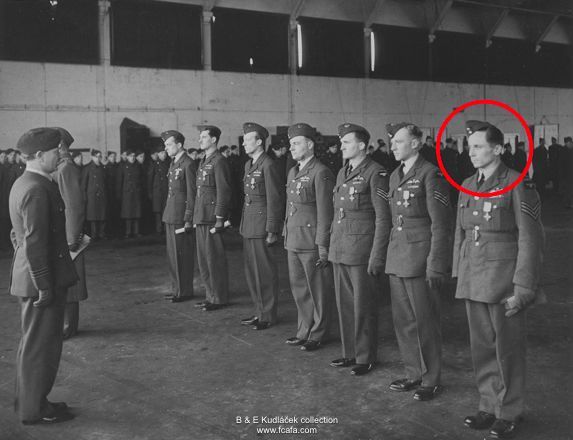
Josef Řechka awarded his first Válečný kříž 1939 medal, 14.12.1940, Duxford. / Josefu Řechkovi byl 14,12.1940 v Duxfordu, udělen první Válečný kříž.
By now the critical demand for fighter pilots, as seen in 1940, had now eased and Řechka, now nearly 30, was too old for a fighter pilot. Initially he volunteered to fly night fighters, but due to age and his previous commercial aviation experience as a civilian pilot in Czechoslovakia it was thought that his skills could be better utilised in another capacity. Initially, on 1 July 1941, he was posted to S.F.S at Kemble and also promoted to Pilot Officer. Posted again on 18 September 1941 to 27 Maintenance Unit at Shawbury.
V té době se kritické poptávky po stíhacích pilotech proti roku 1940 snížily a Řechka, kterému již bylo skoro 30 let, byl starý na stíhacího pilota. Z počátku se dobrovolně přihlásil k nočním stíhačům, ale vzhledem k jeho věku a předchozímu zaměstnání civilního pilota v obchodní letecké společnosti v Československu se domníval, že jeho zkušenosti a schopnosti by byly lépe využity v jiné funkci. Z počátku k 1. červenci 1941 byl povýšen do hodnosti P/O Pilot Officer (poručík) a odeslán k LFŠ na Kemblea. Od 18. září do 1. října 1941 byl zařazen u 27. jednotky údržby v Shawbury. a poté byl vyslán do RAF Ferry Command a s dopravním letounem létal na trati Mont.
Canada:
Kanada:
Was only there until 1 October when he was posted to RAF Ferry Command and ferried aircraft between Montreal, Canada and Prestwick, Britain. The usual route was via Goose Bay, Alaska, Greenland and Iceland. During this period he was temporarily posted, 20 May to 5 June, to 34 SFTS [Service Flying Training School] at Medicine Hat, Canada as a instructor.
Potom byl vyslán do RAF Ferry Command a s dopravním letounem létal na trati Montreal, Kanada a Prestwick, ve Velké Británii. Obvyklá trať letu byla přes Goose Bay na Aljašce, Gronsko a Island. V tomto období byl dočasně vyslán od 20. května do 5. června k 34 SFTS v Medicine Hat v Kanadě, jako instruktor.

Josef Řechka, Canada.
24 Sqn:
U 21. perutě:

With 24 Sqn / U 24. perutě
On 1 December 1942 he transferred to RAF Transport Command and was posted to 24 Sqn. who were based at Hendon. During this period he was promoted to Flying Officer and flew DC3’s. One of the highlight of this period was being the First Officer on a flight which flew Winston Churchill to Paris and Brussels whilst one of the low points was contracting malaria when he was posted to Algeria. During his posting to Algeria he was mainly flying to Casablanca, Morocco and Gibralter. He stayed with 24 Sqn. until 1 May 1945 when he was posted to 147 Sqn., who were a Transport Command unit based at Croydon, which was his final RAF Sqd. of the war.
Dne 1. prosince 1942 byl převelen do RAF Transport Command k 24. peruti, která byla založena na Hendon. Během té doby byl povýšen do hdnosti F/O, Flying Officer (nadporučík) a létal s DC 3. Jedním z vrcholu v tomto období bylo, že jako první důstojník letounu, na jehož palubě byl Winston Churchill, letěl do Paříže a Bruselu, zatímco jedno z nejhorších, bylo jeho vyslání v rámci smluvní malárie do Alžírska. V té době létal do především do Casablanky, Maroka a Gibrateru. U 24. perutě sloužil do 1.5.1945, kdy byl vyslán do 147 perutě jednotky Command Transport se sídlem v Croydonu, což bylo poslední jeho služební zařazení v RAF až do konce druhé světové války.
Post WW2:
Po 2. svět. válce:
In August 1945 he returned to Czechoslovakia and from 1 September until the end of the year he flew with a Transport Command unit of the Czechoslovak Air Force based at Prague Ruzyne. He was demobbed, on 31 December 1945, with a RAF rank of Flight Lieutenant and the following day he joined České aeroline [ČSA], the state airline, as a pilot. This was a common destination for many other Czech ex RAF people Initially he flew ex Luftwaffe Ju 52’s and a year later ČSA purchased some 29 DC3’s which Řechka flew on international flights around Europe.
V srpnu 1945 se vrátil do Československa a od 1. září do konce roku létal s jednotkou ” Command Trasportˇ, Československého letectva se sídle v Praze Ruzyni. Demobilizován byl 31. prosince 1945 s hodností Flght Lieutenant a následující den byl přijat do Československých aerolinii (CSA), státní letecké společnosti, jako pilot. Jednalo se o společný cíl mnoha dalších bývalých českých příslušníků RAF. Z počátku létal na letounech, které za války používala Luftwaffe, Ju 52 a o rok později, ČSA koupily 29 letounů Dakota / (DC3) s nimiž Rechka létal na mezinárodních linkách po celé Evropě.

Josef Řechka, ČSA, 1946.
Unfortunately the situation in Czechoslovakia was becoming very unsettled with the Russian ‘liberators’ staying in the country intent on forcing their Communist ideology onto the nation following the putsch in February 1948. Under this new regime, the ex RAF people became unwanted people as they were deemed to be traitors and tainted with Western capitalism which had no place in the new Czechoslovakia. Most were eventually dismissed from their work and only permitted to do manual or farm work. Others were gradually arrested and imprisoned, some were executed whilst others, and their families suffered further persecution from the Communist authorities.
Vnitropolitická situace v Československu byla v důsledku ruských “osvoboditelů”, kteří se snažili vnutit naší zemi komunistickou ideologii, velice nestálá. Po únorovém puči v roce 1948, byl zaveden nový politický režim, pro který se bývalí příslušníci RAF stali nežádoucími, neboť je považoval za potenciální , kapitalismem ovlivněné, nepřátele a zrádce budované socialistické společnosti v naší zemi. A pro takové v novém Československu již nebylo místo a stali se nežádoucími. Většina bývalých příslušníků RAF , byla propuštěna ze zaměstnání a byla jim povolena jenom manuální nedostatečně honorovaná práce v zemědělství a podobně. Mnozí z nich byli postupně zatčeni, uvězněni a ty, které režim považoval za velmi nebezpečné, byli dokonce popraveni. Jejich rodiny byly komunistickými úřady šikanované, pronásledované a vyloučené na okraji společnosti.
Escape to the West: Útěk na Západ:
Some chose to try and escape and Řechka, now married, was one of these. With Jan Kaucký and Eduard Prchal – both former RAF pilots with 310 Sqd, they planned to steal a aircraft and fly to England. After some months of careful planning, along with Eduard Prchal and Jan Kaucký, both former 310 Sqn pilots who had also fought in the Battle of Britain, managed to escape with their families in a daring aircraft flight on 30 September 1950. They had been planning their escape for nearly a year, with several aborted attempts, before conditions were finally favourable. Because of constant surveillance, their various meetings had to be arranged by ‘coded’ telephone calls to mislead the telephone tappers who they knew were listening in.
Někteří se pokusili ještě před zatčením uniknout na západ a Řechka již ženatý, byl jedním z nich. S Janem Kauckým a Eduardem Prchalem, bývalými piloty 310. Sqdn. RAF, měli v plánu ukrást letadlo a odletět s ním do Anglie. Po několika měsících pečlivého plánování společně s Eduardem Prchalem a Janem Kauckým, bývalými piloty 310. perutě RAF v bitvě o Britanii, se jim podařil husarský kousek a odletěli i se svými rodinami na Západ. Svůj útěk plánovali téměř rok s několika neúspěšnými pokusy až se příznivé okolnosti nakonec sešly. Kvůli neustálému dohledu musely být jejich schůzky sjednávány pomocí “kódovaných” telefonních hovorů, aby zmátli špicly, o kterých věděli, že odposlouchávají jejich tlf. hovory.
Their plan was based on Jan Kaucký being the chief test pilot for ČSA at Ruzyně airport, Prague, a post which would allow them the best opportunity of taking an aircraft without supervision. The plan also required an isolated landing ground in close proximity to Prague. After numerous abortive surveys for a suitable landing strip, including one which nearly resulted in their discovery, they found somewhere suitable. They had to bring their escape plan forward when Kaucký, was ‘tipped off’ that he was going to be replaced, the following Monday, as the company test pilot. During this period, Prchal, aware that he would be limited as to what he would be able to take with him, destroyed all personal documentation that was not essential for their escape and new life in the West.
Jejich plán byl založen na tom, že Jan Kaucký byl hlavním zkušebním pilotem ČSA na letišti Ruzyně v Praze, jehož funkce mu umožňovala dobré příležitosti zmocnit se letounu, který by nebyl pod dohledem. Plán také vyžadoval další přistávací plochu v těsné blízkosti Prahy. Po řadě neúspěšných pokusů takový vhodný přistávací pás nalézt, včetně těch, kterými se málem prozradili, se to povedlo. Nakonec museli svůj plánovaný útěk ještě uspíšit, neboť hrozilo, že má být Koucký následující pondělí ze své funkce odvolán. V té době si také Prchal uvědomil, že budou mít omezené možnosti množství zavazadel a zničil většinu osobních dokumentů, které nebudou pro útěk a nový život na Západě nezbytně nutné.
The following day, 30 September 1950, the 12th Anniversary of the Munich Agreement, was a fine day with a blue sky. Řechka, reported for duty, at Ruzyně airport, for his scheduled flight to Brussels, but feigned an acute illness and telephoned ČSA officials that he would have to see the airports medical officer as he was about to collapse. He then quickly left Ruzyně airport in his car, collected his and Kaucký’s families and then drove to a pre-arranged location to meet Prchal.
Následující den, 30. září 1950, připadl na 12. výročí Mnichovské dohody a byl nádherný den s modrou oblohou. Řechka měl ten den plánovaný služební let do Bruselu, ale ohlásil letištní službě na Ruzyni, že není letu schopen, předstíral že má akutní zdravotní potíže a že se chystá navštívit letištního lékaře aby nezkolaboval. Poté rychle letiště Ruzyně opustil ve svém autě, naložil svoji a Kouckého rodinu a dojel na předem dohodnuté místo, kde se setkali s Prchalem.
The Escape: Útěk:
That day Kaucký was due to take Dakota DC3 [C47] OK-WAA, a cargo aircraft, ostensibly for a scheduled test flight. However, prior to take-off he discreetly had the aircraft fuelled with 2,300 litres (500 gallons) of fuel. At Ruzyně airport a visit by a VIP Soviet delegation was now in progress. Kaucký seized this unexpected opportunity and sent his crew to watch the parade. Once they were away from the aircraft, with no other crew or the usual Security Police on board, he closed the cargo door, went to the cockpit, started the engines, and requested take-off clearance. He received clearance and took off around 10:00 a.m. Once airborne, he made a customary circuit of the airport and then set off on a pre-planned route. Every few minutes he transmitted, as he was required to, reports about his location. In reality he sent reports which indicated a false flight path.
Ten den měl Kaucký použít nákladní letoun Dakota DC3 [C47] OK-WAA, údajně pro plánovaný zkušební let. Avšak před vzletem, tajně natankoval do nádrží 2300 litrů (500 galonů) paliva. V té době probíhala na letišti Ruzyně návštěva sovětské VIP delegace. Kaucký využil této nečekané příležitosti a poslal posádku, aby se šla na ceremonii podívat. Jakmile se vzdálili, bez jediného člena posádky a bez obvyklého policejního dohledu na palubě, zavřel nákladní dveře, šel do kokpitu, nastartoval motory a požádal o povolení ke startu. Povolení dostal a rozjezdovou dráhu opustil kolem 10:00. Jakmile byl ve vzduchu, provedl obvyklý okruh nad letištěm a pak se vydal směrem naplánované trasy. Každých pár minut předával, jak byl žádán, zprávy o své poloze. Ve skutečnosti posílal ale hlášení, která skutečné trase letu neodpovídala.
A few kilometres from Ruzyně, the cars of Prchal and Řechka were parked and the occupants were watching the sky above the airport for the aircraft. When the aircraft was sighted, these hopeful escapers drove their cars to an abandoned, former WW2, airstrip at Neratovice, near Kralupy nad Vltavou, about 15 km from Prague, which had been previously reconnoitered as a suitable landing site.
Několik kilometrů od Ruzyně stály zaparkované vozy Prchala a Řechky a jejich posádky vzrušeně vyhlížely na obloze nad letištěm svůj letoun. Když ho spatřili, plni naděje přejeli se svými vozy na opuštěnou, bývalou přistávací dráhu z doby 2. sv. války v Neratovicích u Kralup nad Vltavou, asi 15 km od Prahy, která byla předtím prověřena jako vhodné místo pro přistání.
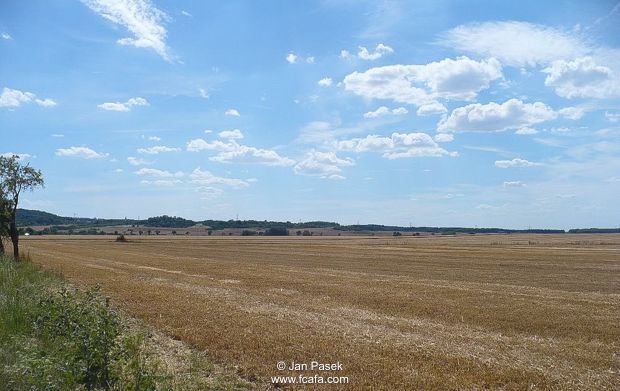
The landing ground at Neratovice, near Kralupy nad Vltavou. / The landing ground at Neratovice, near Kralupy nad Vltavou.
The aircraft approached the airstrip, circled it and Kaucký waggled the aircraft wings – a pre-arranged signal to the ground party that he was alone in the aircraft and no Security Police were on board.
Letoun se přiblížil k přistávací dráze, zakroužil nad ní, a Kaucký zamával křídly, aby potvrdil předem domluveným signálem posádce na zemi, že je v letadle sám, bez dohledu policie na palubě.
Kaucký Lands: Kauckého přistání:
The ground party placed a white pillowcase, on the roof of one of the car’s, to acknowledge Kaucký’s signal and also as a pre-arranged signal to advise him that the ground party was also alone and that it was safe to land. Kaucký lowered the undercarriage, as if to simulate a forced landing, and made a perfect landing on the bumpy airstrip. As he was landing a man drove past the airstrip on a motorcycle and the ground party were terrified that he would report what he had seen.
Čekající cestující na zemi pak položili na střechu jednoho z vozů bílý polštář jako potvrzení, že mávajícím křídlům rozuměli a současně tím potvrzovali, že nejsou sledováni a že může bezpečně přistát. Kaucký vysunul podvozek, jako by simuloval nouzové přistání a perfektně dosedl na nerovném povrchu dráhy. Během přistání jel kolem právě motocyklista a posádky obou vozů se strachovaly, aby někde neohlásil čeho byl svědkem.
Kaucký managed to land using only half the available length of runway. He then taxied slowly towards a pre-arranged corner of the airstrip. Whilst he was doing so the ground party drove to that same corner to meet the aircraft, the cars careening across the ground. Whilst the aircraft was still taxiing, Kaucký ran to the back of the aircraft, opened the cargo door and dropped down the boarding ladder.
Kauckému se podařilo dokončit přistání v polovině délky dráhy. Pak pomalu dojížděl směrem k předem dohodnutému místu rohu přistávací dráhy. Ve stejnou dobu přejel houf příštích pasažérů do rohu přistávací dráhy, kde se měli s letounem setkat. Zatímco letadlo volně pojíždělo, Kaucký doběhl do zadní části letadla, aby otevřel nákladový prostor a spustil žebřík.
Kaucký had no wish to stop and get the aircraft stuck in this ground. The ground party reached the slowly moving aircraft, got out of the cars and taking their few items of personal luggage, rushed to the aircraft. The two children were literally thrown onto the aircraft first, followed by the few items of luggage and then the adults boarded. Once Prchal was on board he ran to the cockpit whilst calling out for all the passengers to go to the front of the cargo area. Kaucký, now back in the cockpit was joined by Prchal and immediately started to take-off. After some 300 yards the aircraft was airborne but in the cargo compartment Řechka was still trying to close the rear cargo door.
Kaucký nechtěl stroj úplně zastavit, aby neuvíznul v nějaké nerovnosti dráhy. Cestující na zemi dostihli pomalu pojíždějící letoun, vyskákali z aut, popadli svá zavazadla a hnali se k letadlu. Obě děti se ocitly na palubě jako první, po nich následovala zavazadla a pak nastoupili dospělí. Jakmile se Prchal ocitnul uvnitř letadla, běžel do kokpitu, a současně navigoval ostatní pasažéry do přední části nákladového prostoru. Kaucký, nyní taky zpět v kokpitu se připojil k Prchalovi a okamžitě začal startovat. Po nějakých 270 metrech se letoun vznesl, ale v nákladovém prostoru se Řechkovi stále nedařilo uzavřít zadní nákladové dveře.
p style=”text-align:justify;font-size:small;font-family:Arial”>At the far end of the airstrip were some tall trees, and Kaucký , took the aircraft into a steep climb to avoid them. At this point, the passengers were not even halfway to the front of the cargo area when the aircraft went into this steep climb. They fell to the floor and, as there were with no seats or anything to grab hold off, slid down the aircraft floor towards the tail; a frightening experience for all especially as they slid past the open cargo door and could see the ground outside! Řechka had been struggling to close the door of the moving aircraft and only accomplished this once the aircraft was airborne, This had been the most difficult part of the escape and had taken only about 90 seconds.Na druhém konci přistávací dráhy byly vidět nějaké vysoké stromy a Kaucký poslal letadlo do strmého stoupání, aby se jim vyhnul. V této chvíli, kdy šlo letadlo začalo strmě stoupat, nebyli ostatní cestující ani v půli cesty k přední části nákladového prostoru. Svezli se na podlahu a bez možnosti čehokoli se zachytit klouzali po podlaze letadla směrem k zádi; byl to strašidelný zážitek zejména ve chvíli, kdy míjeli otevřené nákladní dveře, pod nimiž ubíhala země. Řechka s dveřmi zápasil a podařilo se mu je uzavřít až když byl letoun ve vzduchu. To byla nejtěžší část útěku, naštěstí trvala jenom asi 90 sekund.
To Germany: Do Německa:
After take-off, Prchal, took-over the aircrafts control, turned the aircraft course to 330° and flew at ground-hugging height, to evade radar and patrolling Czechoslovak- assembled Me109G fighter aircraft. He headed towards the Russian Zone of Germany and onto the American Zone in Germany. Kaucký broke wireless silence and called Ruzyně control tower and reported the aircraft’s position as 15 miles east of Prague. In his next radio contact, he said he was south of the airfield.
Jakmile vzlétli, převzal Prchal řízení letounu, nastavil kurz 330 ° a letěl nízko nad zemí, aby se vyhnul radarům a hlídkujícím stíhačkám Me109G, provozovaných Československem. Zamířil směrem k ruské zóně v Německu a poté do zóny americké. Kaucký přerušil radiový klid a volal řídicí věž letiště Ruzyně, aby ohlásil polohu letadla 15 kilometrů východně od Prahy. Ve svém dalším hlášení uvedl polohu letounu na jih od letiště.
Even so, the 20 minute flight to the Czechoslovak border, was nerve-racking for all on board. As they crossed the border, Kaucký made a final call to Ruzyně control tower requesting permission to land – which was given. They now had just about 10 minutes to cross the Russian Zone of Germany before any scrambled Russian fighter aircraft would be close enough to intercept them. Although the Russian security forces did scramble two fighters it was too late to intercept the escape attempt; they safely crossed into the American Zone of Germany, with no Russian fighter aircraft being encountered. Ruzyně was still unaware of the escape attempt and had not reported the aircraft as missing.
Ale i tak byl 20 ti minutový let k československé hranici pro všechny na palubě plný nervozity. Při překročení hranice Kaucký ještě zavolal řídící věž v Ruzyni naposledy a požadoval na ní povolení k přistání, které dostal. Nyní jim zbývalo právě tak asi 10 minut, v nichž museli překonat území ruské zóny v Německu, než budou vyslány do vzduchu ruské stíhačky, aby je zastavily. Přestože ruské ozbrojené síly stihly vyslat do vzduchu dvě stíhačky, bylo už příliš pozdě, aby útěku zabránily. Uprchlíkům se podařilo proniknout do prostoru americké zóny Německa, aniž by se s ruskými stíhačkami setkali. V té době letiště Ruzyně stále ještě nevědělo o tomto pokusu o útěk a nehlásilo, že jeden z letounů chybí.
They were now flying over the American Zone of Germany and in relative safety. Near Frankfurt, they were spotted by some patrolling American fighter aircraft, who came to investigate them. Satisfied that the Czechoslovak DC3 was not a threat, they escorted them for about five minutes as they were heading towards Brussels. From Brussels, they set course for England where they hoped to land at the RAF airbase at Manston, Kent.
Nyní už letěli nad americkou zónou Německa v relativním bezpečí. V blízkosti Frankfurtu narazili na hlídkující americké stíhačky, které si je prověřovaly. Spokojeny s tím, že československá DC3 nemohla být hrozbou, doprovázely je asi pět minut, aby je nasměrovaly na Brusel. Nad Bruselem upravili kurz do Anglie, kde jak doufali, přistanou na letecké základně RAF v Manstonu v Kentu.
Manston:
Within 3½ hours of the aircraft leaving Prague, they were now contacting RAF Manston for permission to land. On the radio they called “Hullo Manston tower, this is OK-WAA calling. How do you read?”
Během 3 a půl hodiny letu z Prahy se nyní mohli obrátit na RAF Manston a požádali o možnost přistání. Do radia se ohlásili – “Halo, věž Manston, volá OK-WAA. Jak nás slyšíte?”
Manston responded and the aircraft sent the message: “This is a escape flight from Czechoslovakia. Repeat an escape flight from Czechoslovakia. Please give us instructions for landing” When they landed the first person to meet the escapers was the station commander, Group Captain Rankin, who fortunately had been a RAF colleague of Prchal during the war.
Obsluha věže odpověděla a letadlo vyslalo zprávu: “Jedná se o útěk z Československa. Opakuji, útěk z Československa. Žádáme o instrukce k přistání.” První osobou, která účastníky útěku po přistání přivítala, byl velitel letiště, kapitán Rankin, naštěstí za války bývalý Prchalův kolega z RAF.
The escapees were kept at Manston for four days in complete secrecy whilst they were vetted by officials. They were then cleared by immigration officials and permitted to go to the Free Czechoslovak Club, at Hampstead, London, whilst arrangements for their new lives in exile were made.
Všichni utečenci byli po 4 dny drženi v Manstonu v naprosté tajnosti, zatímco úředníci prověřovali jejich totožnost. Poté, kdy bylo jasné o koho se jedná, povolili imigrační úřady jejich převezení do československého klubu v Hampsteadu v Londýně, zatímco se vyřizovaly další formality pro jejich nový život v exilu.

OK-WAA parked at RAF Manston, October 1950.
Some 3 hours later they successfully landed at RAF Manston, England where fortuitously the Station Commander had been a wartime RAF colleague of Prchal. Subsequently, his 2nd trip into exile became more difficult that the 1st in 1939. Now there was no war and despite his extensive flying experience – both civilian in Czechoslovakia or military in France and Britain he was grounded by red tape. His Czechoslovak civilian pilot’s licence was not accepted by the British aviation authorities and he did not wish to resume a military career – the option chosen by Kaucký and Prchal. He instead spent the next two years studying to qualify for a British commercial pilot’s license at the same time as having to work to support his family and their new life in their adopted new homeland of England.
Asi po tří hodinovém letu úspěšně přistáli na základně RAF Manston v Anglii, kde náhodou byl velitelem letiště bývalý kolega Prchala z války. Jejich druhá cesta do exilu byla mnohem obtížnější, než v roce 1939. V současné době již nebyla válka a přes bohatou praxi v létání a to jak civilním v Československu, ve francouzské armádě a v RAF ve Velké Británii, tamní byrokracie civilních leteckých úřadů, neuznávala jeho československou Licenci civilního dopravního pilota a protože již nechtěl jako Prchal a Kautský, pokračovat ve vojenské kariéře v RAF. Dva roky studoval, aby získal licenci civilního obchodního pilota ve Velké Británii. Při studiu, aby uživil rodinu a mohl založit nový život v adoptivní nové vlasti, Anglii, musel pracovat.
This he successfully achieved on 23 September 1952. From 17 November 1952 he flew with Transair Ltd, based at Croydon where he remained until 31 July 1960 when the company, along with 3 others airlines, merged to form British United Airways [BUA]. He flew with the new company – the forerunners of British Airways – as a Captain until 31 October 1965.
Dne 23. září 1952, dostal licenci obchodního pilota a od 17. listopadu 1952, létal v Transit Ltd, se sídlem Croydonu, kde zůstal až do 31. července 1960. kdy se jeho společnost spojila s dalšími třemi aeroliniemi a vytvořily British United Airways (BUA) – kde létal jako kapitán letounu do 31. října 1965.
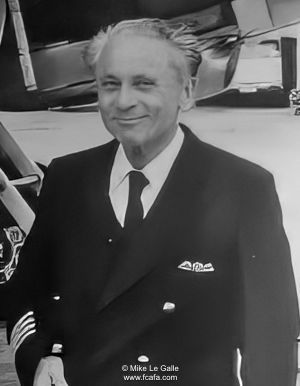
Josef Řechka, Intra Airways.
On retiring from BUA, he joined Morton Air Services on 1 November 1965 and remained with them when they re-named themselves to British United Island Airways in 1968 and again in 1970 when they re-named again to British Island Airways. In the final years of his career he flew for Macedonian Aviation, Intra Airways and then Express Air Services [C.I.] Ltd, who were charter companies, with workloads ranging between flying men and supplies for off-shore oil rigs in the Shetlands to flying newspapers to Spain. After a aviation career that had spanned some 50 years, he retired from flying on 22 February 1981.
Po odchodu z BUA, nastoupil 1. listopadu 1965 u letecké dopravy společnosti Morton, která se v roce 1968 přejmenovala v British Umited Island Airways a v roce 1970 se opět přejmenovala na britský Island Airways. V posledních letech své letecké kariery létal v Makedonské Intra Airways a u chartrové společnosti (CL Ltd) s pracovní zátěží v rozmezí létání a potřeb off- shore ropných plošin na Shetlandských ostrovech, až po létání do Španělska. Po letecké kariéře trvající 50 roků, ukončil svou leteckou činnost dne 22. února 1981.
He died 15 January 1984, aged 73, and is interred at the Czechoslovak plot at Brookwood, Surrey.
Zemřel 15.ledna 1984, ve věku 73 let a je pohřben na československém pozemku hřbitova v Brookwood, Surrey.

Josef never returned to Czechoslovakia. At the RAF Rehabilitation Ceremony, held in Prague on 13 September 1991, he was promoted, in memoriam to the rank of plukovník – Group Captain – in the Czechoslovak Air Force.
Josef se již nikdy nevrátil do Československa. Při slavnostní rehabilitaci příslušníků RAF, která se konala v Praze dne 13. září 1991, byl povýšen in memoriam, do hodnosti – plukovník československého letectva.

Medals awarded: Udělené medaile:
Czechoslovakia : Československo: :

Valečný kříž 1939 and 2 bars [Czechoslovak War Cross]
Za chrabrost před nepřítelem and bar [Gallantry facing the enemy medal]
Za zásluhy I. st. [Merits medal grade I]
vojenská pamětní medaile se štítky F a VB [Memorial Medal of Czechoslovak Foreign Army with France and Great Britain bars]

Air Force Cross [31 March 1945.]
1939–1945 Star with Battle of Britain Clasp
Air Crew Europe Star
Defence Medal

Croix de Guerre
_______________________________________________________________
Remembered: Památníky:
_______________________________________________________________
Great Britain / Velká Británie:
He is commemorated, along with the other 2938 Battle of Britain aircrew, on the Christopher Foxley-Norris Memorial Wall at the National Battle of Britain Memorial at Capel-le-Ferne, Kent:

_______________________________________________________________
He is also commemorated on the London Battle of Britain Memorial:
Je také připomenut na pomníku Bitvy o Britanii v Londýně.:

_______________________________________________________________
Czech Republic / Česká republika:
_______________________________________________________________
Jesenice:
He is remembered on a memorial in his home village of Jesenice.
Jeho jméno je připomínáno na pomníku v jeho rodné Jesenici.

_______________________________________________________________
Prague 1 – Klárov:
In November 2017, his name, along with the names of 2512 other Czechoslovak men and women who had served in the RAF during WW2, was unveiled at the Winged Lion Monument at Klárov, Prague.

_______________________________________________________________
Article last updated 19.04.2024.

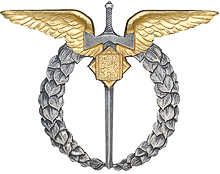


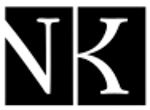

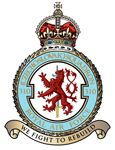
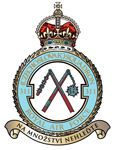
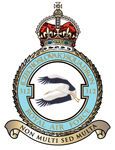
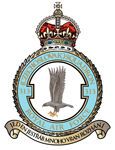


I knew Joe when he flew with Morton, a modest man and superb pilot and captain. I considered a privelege to have known him, a legend among his peers
My late father John Edward Milner flew with Joe many a time on Transair Dakotas out of Croydon and BUA viscounts out of Gatwick
I worked for BIA in Operations when that company’s last DC3 flight from LGW (empty positioning to BOH) took place. Joe was rostered for it, together with another skipper, whose name now escapes me. They told us that they had asked permission from LGW ATC for a low run after take off and that this had been approved ‘subject to traffic’. What they didn’t do was get permission from BAA. They took off from holding point Bravo and, as soon as they were airborne, took a sharp left and across the maintenance area, where at that time, the old Mortons hangar still stood. BIA Ops was at the root of the centre pier adjacent to Stand 10 and their intention was to give us a close look before showing their wheels to the tower. They flew across the front of the departure lounge and across the centre pier before heading west again towards the tower. Unfortunately, the Airport Manager’s office was on the sixth floor of the terminal building and he looked down in amazwment at the top of this unauthorised DC3 as it passed below his office window. The phone rang moments later and the call was transferred to appropriate senior management. A promise was made to the irate Airport Manager that the pilots would be dealt with as soon as they arrived at BOH. As this was already their last flight for the company, the matter was easily resolved. A call was made to the Airport Manager later in the day to say that neither of the pilots would be flying fo the company again!
Thanks for copying that to me. Great anecdote!
I still haven’t found any photos of Joe in his Morton’s/BUIA/BIA days to decorate my short memoir of him. Tried to contact members of his family without success. Any help would be appreciated, as I would like to send them a copy of the memoir.
Regards,
Chris
Date: Mon, 17 Feb 2014 20:27:53 +0000
To: chrisjanscott@hotmail.com
I flew with Joe from the time I joined Intra Airways until it’s demise. He was a fantastic person in every respect, he also taught me low flying on a trip between Le Harve & the French Coast towards Cherbourg. You have to be able to see the prop wash in the water! I also did a Jer/Lisbon
With him, what happy memories. Aviation definitely not the same without these wonderful characters, how lucky I was.
Chris Forrester
Thanks for this excellent biography, which fills in some big gaps in my knowledge, and adds so much interesting detail.
Jo’ was possibly the finest man I flew with in my 35-year career. He took me to the Channel Islands in a Morton’s Heron on my first day as a qualified airline copilot in 1967. I later flew with him on C47 Dakotas, and have written a short memoir of one interesting trip with him on the Dak.
He was not only an excellent pilot and captain; but quiet, modest and unflappable, never cutting corners unless it was 100% safe. He had flown faster, larger aeroplanes, including the BUA Viscounts, and was able to pass on some of the safety culture of airline operations to us rookies. Aged 58, he was still wiry and fit, enjoying a game of tennis.
He rarely mentioned the war, although he did once describe to me his test flying in Praha in the 1930s. He never told me the circumstances of his second escape from Prague, although we all knew why he was banned from flying the Berlin Air Corridor. A very private person, he seemed fairly happy to live in England, but I always had the impression he was metaphorically looking over his shoulder, like one or two Poles I worked with later. He was absent from work for months at the end of 1968, allegedly for medical reasons. The last time I saw him was when I flew him to Jersey in a BAC1-11 in about 1981.
I doubt we shall see his like again.
Chris Scott